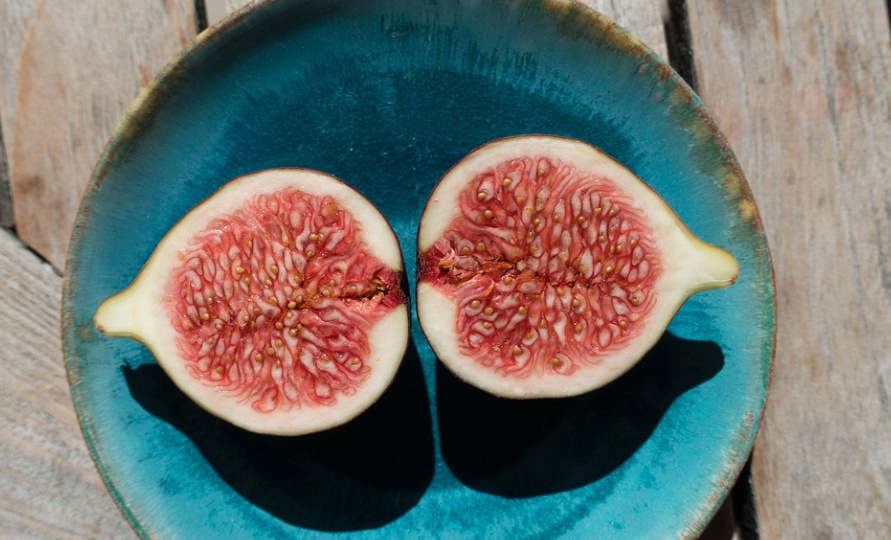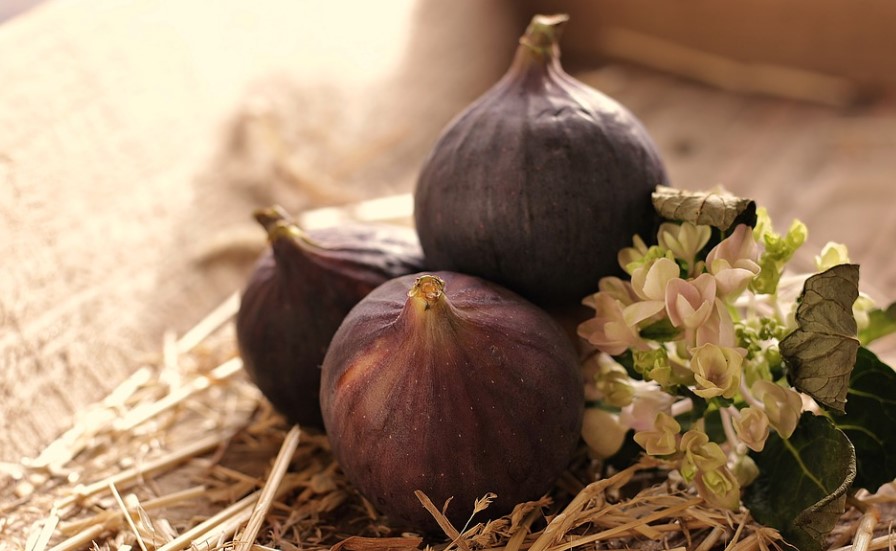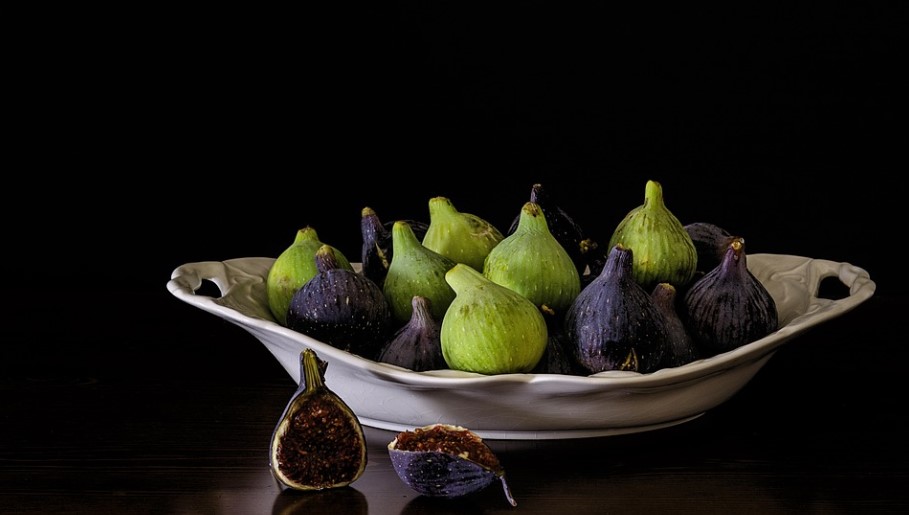
What is a Fig? Where is the fruit “fig” found? Figs are native to which country? Find our answer to these amazing facts about figs in this article.
A fig is really a chewy fruit with a papery skin that is either green or purple, depending on the variety. The inside of a fig is often colored red, and we consume the whole fruit, including the skin.
Figs have a long history of usage as a folk remedy for a variety of illnesses, including those affecting the gastrointestinal tract, the reproductive system, the respiratory system, and the endocrine system.
The majority of us are aware of the many fruits that it may harvest from fig trees.
Soft purple vessels that cover brilliant ruby flesh have been famous for celebrations since the Middle Ages.
Figs come from a kind of flowering plant native to Asia that is a member of the mulberry family.
It is a plant that is native to western Asia and the Middle East, but it gets cultivated and sought since ancient times.
Today, it is present all over the globe, both for the fruit it produces and as an aesthetic plant. However, the fig tree is more than the sum total of its fruit-bearing branches.
They are among the most ancient and ecologically significant species of plant life on the whole globe.
Figs are among the most popular types of fruit due to their exceptional sweetness and delectable flavor.
Let’s go a little further into these 30 facts about figs and find out more.
Facts about Figs
1. Naturalization of figs has occurred in a few areas in Asia and the Americas.
2. The word “fig” comes from the Hebrew word “feg,” which was also used in the past to refer to the fig tree. The Latin word “ficus” is also where the term “fig” originated.
3. Food business use figs, as well as in the cosmetic and pharmaceutical industries, where they are available in the production of a variety of creams and lotions.
4. Figs come from a tree that is between 10 and 30 feet tall, and it considers being of medium size.
5. Figs are famous for reaching fifty feet on rare occasions when grown in favorable environmental circumstances.
6. The Ancient Greeks held figs in such high regard that they banned their export. The fig was an essential part of the daily diet, and they used the juice from the fruit to cure a wide variety of conditions, including toothaches, boils, and warts.
7. Figs have enormous leaves that are often three to five times split into lobes. To hide their nakedness, we remember Adam and Eve to have worn fig leaves in the Bible, making them easy to see.
8. Almost all fig trees have their unique type of wasp responsible for pollinating them.
9. In most cases, the root system of fig trees is relatively close to the ground’s surface. The crown has a diameter that is one-third of the root’s diameter.
10. The figs native to South Africa, for example, have roots that stretch far underground. The deepest ever documented roots reach depths of over 100 meters (400 feet).

11. The blossom that forms the fruit of the fig is really upside down and grows within the fleshy framework. The bloom is not visible from the outside of the building. We know this form of the flower by its scientific term, infructescence.
12. A very specific kind of wasp is responsible for pollinating figs. This wasp penetrates the infructescence of the fig via a very small opening. Usually, a wide variety of animals eat figs, many of which then pass the seeds of the fruit through their digestive tracts.
13. On the basis of the kind of bloom that they produce and the means by which they reproduce, they may break down figs into one of four types. Only one kind of fig, known as a caprifig, can produce pollen; the other three varieties rely on this one’s pollen.
14. Parthenogenesis is the process by which figs are able to reproduce without the assistance of pollen. However, this results in the production of infertile fruit.
15. Figs may grow from a variety of sources, including seeds, cuttings, tissue cultures, and grafts. This kind of reproduction, which is a vegetative form, is far quicker than reproduction via roots.
16. Figs are there as fruit on the branches of the plant. On the other hand, wide varieties of figs that are native to the Philippines have the ability to bear fruit directly on the stem.
17. They include a significant amount of several vitamins, minerals, and fiber. They have a flavor that is both pleasant and sweet. Typically, people consume them in their raw or dried form or as components of savory and sweet dishes.
18. We associate Figs with a number of health advantages. Because of its reputation for firming the skin, you may apply it to the face in the form of a mask, and you can also use it to alleviate congestion in the chest. It may lessen the itchiness and pain caused by bug bites by using juice produced from figleaves.
19. People trying to kick the smoking habit get encouragement to eat figs. They may reduce the urge to smoke cigarettes thanks to the high alkalinity content of these foods.
20. Figs are an alternative beverage choice for some individuals in place of coffee.

21. Skin irritations come from the milky sap generated in the green portions of fig.
22. Figs grown under cultivation have a shelf life of around 35 years.
23. The edible fig tree was one of the earliest plants intentionally grown by humans.
24. In the ancient Neolithic settlement of Gilgal I, located within Jordan Valley, thirteen kilometers north of Jericho, researchers discovered nine subfossil figs belonging to a parthenocarpic kind that dates back to around 9400 to 9200 BC.
25. The cultivation of figs was something that Aristotle and Theophrastus both wrote about. Figs were relatively common in ancient Greece.
26. Aristotle observed that, just as there are male and female animals, there are male and female figs. The cultivated fig is the fruit-bearing variety, while the wild caprifig is the helpful kind.
27. The Romans consumed a lot of figs as a staple food source. They knew several types of figs at the time of Cato the Elder’s writing of De Agri Cultura (c. 160 BC), and he describes them all there.
28. Augustus, Rome’s first emperor, was allegedly poisoned by his wife, Livia, who covered the fruit with a deadly substance and fed it to him from his garden.
29. From Afghanistan all the way to Portugal, figs were grown for their fruit. They used to cultivate it in the Indian district of Pithoragarh, which is in the Kumaon highlands.
30. Spanish missionaries headed by Junipero Serra delivered the first figs to the American continent in 1769. They specialized in cultivating the Mission type, which remains a best-seller today.

Conclusion
One additional fact is that Pliny, a Roman scientist who lived in the first century AD, referred to the Kadota variety of figs in his writings.
In conclusion, Figs are an incredibly versatile and interesting fruit with a long history of cultivation and use.
From their exceptional nutritional value to their culinary uses, Figs offer something for everyone.
Whether you’re looking for a delicious snack or an ingredient in a creative dish, Figs are sure to provide you with plenty of options.
Here, I conclude the article on facts about Figs. For more informative articles, stay connected with us.
